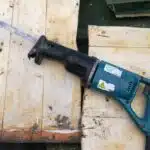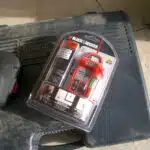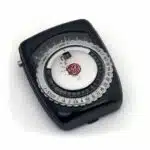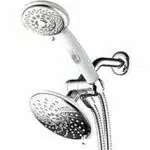A tape measure is one of the most common and useful tools for measuring length, width, and height accurately. Whether you are a carpenter, builder, engineer, or DIY enthusiast, knowing how to read a tape measure is an essential skill that can save you time, money, and frustration. However, reading a tape measure correctly requires practice and attention to detail.
In this article, we will cover the basics of how to read a tape measure. We will start with an overview of the different types of tape measures available on the market and their features. Then we will delve into the markings on a standard tape measure and what they mean. By the end of this article, you should have a solid understanding of how to read a tape measure like a pro and use it for any project that requires precise measurements.
Different Types Of Tape Measures
Metaphorically speaking, a tape measure is like a versatile ally that can help you take measurements accurately and efficiently. However, not all tape measures are created equal. There are different types of tape measures available in the market that serve different purposes.
The two main types of tape measures are digital and manual. Digital tape measures have an electronic display that shows measurements in either metric or imperial units. They are quick, easy to use, and ideal for those who require precise measurements. On the other hand, manual tape measures require more effort to use but are more affordable than their digital counterparts.
Apart from digital and manual tape measures, there are also specialty tape measures designed for specific tasks such as measuring angles or diameters. For example, a laser distance meter is a type of specialty tape measure that uses laser technology to determine distances accurately.
When selecting the right tape measure for your needs, it is important to consider factors such as accuracy, durability, and ease of use. Additionally, think about what kind of work you will be doing with the tape measure to determine if you need a specialty tool or if a basic model will suffice. By choosing the right tool for the job at hand, you can ensure accurate measurements every time.
Selecting The Right Tape Measure For Your Needs
- There are a variety of types of tape measures available, such as pocket, long steel, and power tape measures, so it is important to select the one that best suits the needs of the user.
- Accuracy of measurement is important when using a tape measure, so it is important to consider the increments marked on the tape measure when selecting the right one for the job.
- Additionally, tape measures are available with a variety of features, such as locking handles and built-in levels, that can simplify the measuring process.
- Depending on the type of work being done, the user should consider the length, durability, and overall accuracy of the tape measure when selecting the right one.
Types Of Tape Measures
When it comes to selecting the right tape measure for your needs, it’s important to consider the type of tape measure that will best suit your task at hand. Two main types of tape measures are available in the market: retractable and manual. Retractable tape measures are widely used as they provide ease of use with their automatic retraction feature. Manual tape measures, on the other hand, require manual winding or folding after use.
Another aspect to consider is whether you need a digital or analog tape measure. Digital tape measures offer greater accuracy and precision than analog ones. They also display measurements in different units such as inches, feet, meters, etc. Analog tape measures rely on markings etched onto their surface and can provide sufficient accuracy for most tasks.
Ultimately, the type of tape measure you choose should depend on your specific needs and preferences. Consider factors such as usage frequency, task complexity, and budget before making a final decision. Whether you choose a retractable or manual, digital or analog tape measure, make sure it fits comfortably in your hand and has clear markings for accurate measurements every time.
Measuring Accuracy
When it comes to selecting the right tape measure, accuracy is a crucial factor. Measuring inaccurately can lead to costly mistakes and wasted time. One key consideration for accuracy is measuring irregular shapes. These can be difficult to measure accurately with a straight tape measure, which may not conform to the shape of the object being measured. A solution is to use a flexible measuring tape that can bend and mold to the shape of the object.
In addition, when measuring around obstacles, it’s important to take into account any obstructions that may affect the measurement. For example, if measuring around a corner or overhang, it may be necessary to add extra length to the measurement in order to compensate for the obstacle. Tips for measuring around obstacles include using a longer tape measure than needed or using a string or wire as a guide.
Ultimately, achieving accurate measurements requires attention to detail and precision. When selecting a tape measure, look for one with clear markings and easy-to-read numbers. Consider factors such as usage frequency and task complexity before making a final decision on which type of tape measure will best suit your needs. With proper technique and use of appropriate tools, you can ensure accurate measurements every time.
The Anatomy Of A Tape Measure
Now that you have selected the right tape measure for your needs, it is important to understand the lock mechanism and how to read the markings accurately. The lock mechanism is a feature on most tape measures that allows you to secure the blade in place once it has been extended. To engage the lock, simply push down on the button located near the bottom of the tape measure. To release the lock, press down again.
When reading the markings on a tape measure, it is important to remember that there are typically two types of marks: feet/inches and centimeters/millimeters. For feet/inches, each inch is divided into 16ths or 32nds. It is best to count these marks starting from one end and working your way towards the other end. For centimeters/millimeters, each centimeter is divided into 10 millimeters. Again, start at one end and work your way towards the other end.
To ensure accurate measurements, it is important to hold the tape measure properly and make sure it is straight before taking measurements. This means holding the tape measure securely with one hand at one end while extending it out with your other hand. When taking measurements, make sure that both ends of the tape measure are securely in place before recording your measurement.
Understanding how to use a tape measure can take time and practice but by following these tips and techniques for understanding the lock mechanism and reading markings accurately you will be well on your way to being able to take precise measurements every time. In our next section we will delve further into understanding more about parts of a measuring tape such as its blade and hook which are equally important when using a measuring tool such as this.
The Tape Measure Blade And Hook
The tape measure blade is the main component of a tape measure, and is typically marked with linear measurements along its length. It is important to note that the markings on the blade denote the full length of the measurement, including the hook. The hook is a metal loop attached at the end of the blade, and is designed to hook onto a surface when taking measurements. The hook length is accounted for in the markings on the blade, so it is necessary to take this into consideration when reading a tape measure. Additionally, the hook is designed to slide along the blade, allowing the user to take measurements at different parts of the blade.
Tape Measure Blade
The tape measure blade is the most important part of the tool, as it allows for accurate measurements to be taken. Measuring techniques vary depending on the type of measurement being taken, but there are some basic principles that apply to all types of measurements. Firstly, the tape measure should be held taut against the object being measured, with the blade facing outwards. Secondly, it is important to use the correct units of measurement for the task at hand. For example, if measuring a length in inches, it is crucial to read the tape measure in inches rather than centimeters or millimeters.
The materials used to make tape measure blades can also affect their accuracy and longevity. Some common blade materials include steel, fiberglass and plastic. Steel blades are typically more durable and long-lasting, but are also heavier and can become damaged if dropped or exposed to harsh conditions. Fiberglass blades are lightweight and flexible, making them ideal for measurements in tight spaces or around curves. Plastic blades are often used in low-cost tape measures but may not provide as much accuracy or durability as other materials.
In conclusion, understanding how to read a tape measure blade is essential for anyone who needs to take precise measurements on a regular basis. By mastering basic measuring techniques and choosing a tape measure with an appropriate blade material, users can ensure they get accurate results every time they use their tool. Whether one is a professional tradesperson or simply someone who enjoys DIY projects at home, having a reliable tape measure with a quality blade can make all the difference in achieving success in their work.
Hook
The hook on a tape measure is an essential component that enables accurate measurements to be taken. It allows for the user to hold the tape measure in place while measuring, ensuring that the measurement is precise and consistent. The hook comes in different shapes and sizes, but all serve the same purpose of providing a reference point for measurement.
To use the hook on a tape measure for accurate measurements, it is important to understand how it works. The hook should be placed firmly against the object being measured, with the blade held taut against it. The measurement should then be read from where the blade begins at the hook. This ensures that any deviation caused by the thickness of the hook is accounted for and an accurate measurement is obtained.
It may also be necessary to adjust the hook on a tape measure for different types of materials. For example, when measuring soft materials such as fabric or paper, a smaller hook may be needed to ensure that it does not damage or puncture the material being measured. On harder materials such as metal or wood, a larger or more robust hook may be required for greater accuracy and stability during measurement. By understanding how to adjust the hook on a tape measure for different materials, users can ensure they get reliable and precise results every time they use their tool.
The Metric System Vs. Imperial System
The Metric System and Imperial System are the two most commonly used systems of measurement in the world. The Metric System is a decimal-based system of measurement that uses units such as meters, grams, and liters, while the Imperial System is a non-decimal system that uses units such as inches, pounds, and gallons.
The Metric System has several advantages over the Imperial System. One of the primary benefits of the Metric System is its simplicity and ease of use. It is based on multiples of 10, which makes it easy to convert between different units within the system. Additionally, it is widely used around the world, making it easier to communicate measurements across borders.
On the other hand, one advantage of the Imperial System is its familiarity to those who grew up using it. Many people find it easier to visualize measurements in inches or feet rather than centimeters or meters. Furthermore, some industries still rely heavily on Imperial Units for specific applications.
Converting between these two systems can be challenging at times but is necessary when working with measurements from different countries or industries. While there are conversion calculators available online, it’s important to understand how these conversions work so that they can be done manually if needed. In general, converting from metric units to imperial requires multiplying by a conversion factor, while converting from imperial to metric requires dividing by a conversion factor.
Moving forward into our next topic will be discussing how to read fractions on a tape measure – an essential skill for anyone working with tools in construction or other industries where precision measurements are crucial.
How To Read Fractions On A Tape Measure
- A tape measure is a tool used to measure length, and understanding fractions on a tape measure is a skill that can be useful in many practical applications.
- Fractions on a tape measure are typically represented with a single numeral for the numerator and a corresponding number of hash marks for the denominator.
- Identifying fractional measurements on a tape measure requires an understanding of the markings and the calculations necessary to convert them into decimal form.
- For example, two hash marks indicate a 1/2 inch measurement, while three hash marks indicate a 3/16 inch measurement.
Understanding Fractions On A Tape Measure
Understanding fractions on a tape measure is crucial when it comes to reading measurements accurately. Fractions are often used in construction and woodworking, so having a good comprehension of them is essential for those working in these trades. Converting fractions to decimals is an important step in this process. For example, 1/4 inch can be converted to 0.25 inches, while 3/8 inch can be converted to 0.375 inches. Understanding how to convert fractions will make measuring easier and more accurate.
Estimating measurements with a tape measure is another aspect that needs attention when interpreting fractions on a tape measure. The markings on the tape measure are usually in increments of 1/16th of an inch or smaller, making it challenging for some people to identify the exact measurement needed quickly. However, with practice, one can learn how to estimate measurements by identifying the markings between the lines on the tape measure accurately. This skill also requires an understanding of fractions and their decimal equivalents.
In conclusion, understanding fractions and estimating measurements are two crucial skills required when reading a tape measure accurately. By converting fractions into decimals and learning how to estimate measurements correctly, one can ensure precision in their readings and execute projects with greater accuracy. These skills may take time and practice to develop but mastering them will help you achieve better results in your work.
Identifying Fractional Measurements
When it comes to reading fractions on a tape measure, identifying fractional measurements is another crucial skill that one must master. Tape measures usually have markings in increments of 1/16th of an inch or even smaller, making it challenging for some people to identify the exact measurement quickly. However, with practice, one can learn how to read the markings correctly and identify fractional measurements accurately.
Converting fractions to decimals is a useful technique when identifying fractional measurements on a tape measure. For instance, 1/8 inch can be converted to 0.125 inches, while 5/16 inch can be converted to 0.3125 inches. With this conversion, one can easily identify the fractional measurement and its decimal equivalent on the tape measure.
Estimating fractional measurements also plays a significant role when identifying them on a tape measure. When measuring objects that are not precisely divisible by an inch or other common fraction sizes, estimating becomes necessary. Estimating requires identifying the markings between lines on the tape measure accurately and understanding their corresponding fractional values. With these skills combined, one can quickly identify any fractional measurement required for their project with precision and accuracy.
Understanding Inches, Feet, And Yards
After understanding how to read fractions on a tape measure, the next step is to comprehend the measurements of inches, feet, and yards. Converting measurements between these units is essential in everyday life. For example, when renovating a room, knowing the area’s size in square feet helps determine the amount of paint or flooring required.
Understanding inches is crucial as it is the smallest unit displayed on a tape measure. Each inch is divided into 16 lines or “ticks,” with each tick representing 1/16 of an inch. Feet are generally represented by a red line marking every 12 inches on most tape measures. Yards are rarely found on tape measures but can be calculated by multiplying three feet.
Practical applications for measuring length with a tape measure include measuring furniture to ensure it fits through doorways and hallways before moving it, determining clothing sizes, measuring window frames for blinds or curtains, and calculating material needed for DIY projects such as woodworking or landscaping. Learning how to use a tape measure accurately can save time and money in various situations where precise measurements are necessary.
Moving forward, mastering how to read fractions and understand measurements of inches, feet, and yards lays the foundation for using a tape measure accurately. The subsequent section will delve deeper into measuring length with a tape measure using techniques such as taking inside and outside measurements while avoiding common mistakes often encountered when using this tool.
Measuring Length With A Tape Measure
When measuring length with a tape measure, it’s important to keep the tool straight and taut against the surface being measured. This will ensure accurate measurements every time. However, measuring curves and irregular shapes can pose a challenge.
Measuring curves requires a flexible tape measure that can conform to the shape being measured. It’s essential to keep the tape measure taut while following the curve, as any slack in the tape could result in inaccurate measurements. For best results, take multiple measurements along the curve and average them out for an accurate reading.
When measuring irregular shapes, it’s important to break down the shape into smaller sections or components that can be easily measured with a straight tape measure. Add up these smaller measurements to determine the total length of the shape. Alternatively, use a flexible tape measure to follow along any curves or bends in the shape, making sure to keep it taut for accurate readings.
Measuring Width And Height With A Tape Measure
When measuring width and height with a tape measure, it is important to take accurate readings in order to ensure precision. Start by holding the end of the tape measure at one end of the object being measured, and extend it to the opposite end. Be sure to keep the tape measure straight, as any bends or curves can alter the measurement. For objects that are not straight, such as cylinders or spheres, it may be necessary to measure diagonals or curves in order to get an accurate reading.
To measure diagonals, place one end of the tape measure at one corner of the object being measured and extend it diagonally across to the opposite corner. Take note of the measurement and repeat for the other diagonal. When measuring curves, use a flexible tape measure made specifically for this purpose. Align it along the curve being measured and take note of where it intersects with a straight line on the tape measure. Repeat this process at multiple points along the curve for accuracy.
It is important to remember that when measuring width and height with a tape measure, accuracy is key. Always double-check measurements before making any cuts or adjustments based on those measurements. In our next section, we will discuss how to use a tape measure for angled cuts, which will require even more precise measurements in order to achieve optimal results.
Using A Tape Measure For Angled Cuts
Moving on, let’s delve into the art of measuring irregular shapes. Often in construction, we come across peculiar shapes that require precise measurements. Measuring such shapes can be quite tricky as they lack the straight lines and right angles that a typical measurement tool is designed for. However, with a bit of practice and some tips from the experts, you can become proficient in measuring even the most challenging of shapes.
To start measuring irregular shapes, it’s essential to first break down the shape into smaller components. By dividing the shape into more straightforward geometric figures like rectangles or triangles, we can measure each component individually and then combine them to get an accurate measurement of the whole shape. Additionally, it’s crucial to maintain consistency while taking measurements so that there are no discrepancies later on.
Once you have mastered measuring irregular shapes, you can move onto calculating angles for precision cuts. Precision cutting is a crucial aspect of any construction project as it ensures seamless joints and perfect fitment. To calculate angles accurately, you will need a protractor or an angle finder tool. Once you have identified the desired angle, use your tape measure to mark out the cut line precisely. With these skills under your belt, you’ll be able to tackle intricate construction projects with ease.
- When measuring irregular shapes consider breaking them down into simpler geometric components.
- Maintain consistency while taking measurements.
- Always double-check your calculations before making precision cuts.
Moving forward with our discussion on accurate measurements let us now dive into some tips that will come in handy during your next project.
Tips For Accurate Measurements
Accurate measurements are essential in a wide range of industries, from construction to fashion design. To ensure the precision of your measurements, it is important to follow some tips that can help you achieve better results. First and foremost, always make sure that the tape measure is straight and not twisted or bent. This can cause significant errors in your readings.
Measuring curves is another area where accuracy can be challenging. In these cases, it is recommended to use a flexible measuring tape instead of a rigid one. The flexible tape can adapt to the curve and provide a more accurate measurement. Additionally, taking multiple measurements at different points along the curve will help you estimate an average measurement that is closer to the actual value.
Estimating measurements is often necessary when dealing with large objects or distances that are difficult to measure directly. One useful technique for estimating distances is called pacing, where you count your steps and multiply by an average stride length. Another option is using reference objects of known size as a comparison point for estimation. Whatever method you choose, remember to take into account any potential sources of error and adjust accordingly.
Moving on to the next section about common mistakes to avoid when taking measurements, there are several pitfalls that can lead to inaccurate readings. By keeping in mind these potential errors and how to prevent them, you can increase your chances of obtaining precise measurements every time.
Common Mistakes To Avoid
- Mixing up imperial and metric units is one of the most common mistakes to avoid when reading a tape measure.
- Misreading fractions is a mistake that can lead to inaccurate measurements.
- Overconfidence in measurement accuracy can be a source of error in reading a tape measure.
- In order to avoid these mistakes, one must be aware of the units being used and understand how to read fractions accurately.
- It is also important to ensure that the tape measure being used is calibrated correctly.
- With practice and knowledge, it is possible to become proficient in reading a tape measure and avoiding common mistakes.
Mixing Up Imperial And Metric Units
When it comes to reading a tape measure, one of the most common measurement errors is mixing up imperial and metric units. This mistake can be detrimental, especially when working on projects that require precise measurements. To avoid this error, it is crucial to have a clear understanding of both systems and how to convert measurements from one system to another.
When dealing with imperial units, it is essential to know that they are based on inches, feet, and yards. On the other hand, metric units rely on millimeters, centimeters, meters, and kilometers. Converting measurements between these two systems can be challenging for many people because they involve different measurement scales. However, with practice and familiarity with each system’s basic units of measurement, it becomes easier to switch between them.
Another way to avoid mixing up imperial and metric units is by thoroughly checking all measurements before proceeding with any project. Ensure that you are using the correct unit of measurement for each task at hand. A small mistake in conversion can lead to significant errors in your final product or service. Therefore, double-checking your work will help you identify any mistakes early enough before they cause problems down the line.
In conclusion, mixing up imperial and metric units is a common mistake when reading a tape measure or working with other measuring tools. However, this error can be avoided by understanding both systems’ basic principles and knowing how to convert measurements between them accurately. Additionally, always double-checking your work before proceeding with a project will help ensure that you achieve accurate results every time.
Misreading Fractions
When it comes to taking measurements, accuracy is key. However, even the most experienced measurement specialists can make mistakes. One of the most common errors when reading a tape measure is misreading fractions. This mistake can be detrimental, especially when working on projects that require precise measurements. To avoid this error, it is crucial to have a clear understanding of fractions and how to convert them accurately.
Converting fractions can be challenging for many people because they involve complex mathematical operations. It is essential to understand the concept of numerators and denominators and how they relate to each other. Fractions are an integral part of measuring tools such as rulers and tape measures, and misreading them can lead to significant measurement errors.
Tips for reducing errors when dealing with fractions include breaking down larger fractions into smaller ones or converting them into decimals. For example, if you are measuring 7/8 inch, you can break it down into 7/16 inch by halving it twice. Alternatively, you can convert it to a decimal by dividing 7 by 8, which gives you 0.875 inches. These simple techniques help reduce errors significantly and ensure accurate measurements every time.
In summary, misreading fractions is a common mistake when using measuring tools such as tape measures and rulers. However, this error can be avoided by understanding the concept of fractions and knowing how to convert them accurately. By breaking down larger fractions or converting them into decimals, measurement specialists can reduce their chances of making mistakes and achieve accurate results every time they take measurements.
Overconfidence In Measurement Accuracy
Avoiding measurement errors is crucial in ensuring that projects are completed accurately and efficiently. While it is essential to understand the technicalities of measurement tools and units, overconfidence in one’s ability to take precise measurements can lead to mistakes. Many measurement specialists fall into the trap of assuming that they have taken accurate measurements without double-checking their work, leading to costly errors.
Overconfidence in measurement accuracy can be detrimental, especially when working on projects that require precision. It is not uncommon for measurement specialists to assume that they have taken an accurate reading and move on to the next task without double-checking their work. However, this approach can lead to significant errors that may impact the outcome of a project. As such, it is important to emphasize the importance of double-checking measurements before proceeding with any other tasks.
To avoid the pitfalls of overconfidence in measurement accuracy, it is crucial to adopt an attitude of caution when taking measurements. This involves taking the time to double-check all readings before moving on to the next task. Additionally, one should consider using multiple methods of verification, such as comparing readings from different measuring tools or having another individual verify their work. By doing so, measurement specialists can reduce their chances of making errors and achieve accurate results every time they take measurements.
Maintaining And Storing Your Tape Measure
One common objection to maintaining and storing a tape measure is that it takes too much time and effort. However, taking proper care of your measuring tool can significantly extend its lifespan and improve its accuracy, ultimately saving you time and money in the long run.
Proper cleaning is essential for maintaining the accuracy of your tape measure. After each use, wipe down the blade with a dry cloth to remove any dirt or debris that may have accumulated. For more stubborn dirt or grime buildup, use a damp cloth with mild soap and water. Avoid using harsh chemicals or solvents as they may damage the markings on the blade.
Calibration is another important aspect of maintaining your tape measure’s accuracy. It’s recommended that you check your tape measure against a known standard at least once a year. If you notice any discrepancies, consider getting it professionally calibrated. Additionally, when not in use, store your tape measure in a protective cover or case to prevent damage from bumps or drops.
Transition: Now that you know how to properly maintain and store your tape measure, let’s move on to troubleshooting common problems that you may encounter during measurement tasks.
Troubleshooting Common Problems
- Measurements are an integral part of many different trades and professions, and understanding how to read a tape measure is a key skill for anyone needing to make precise measurements.
- It is important to understand the various types of markings on a tape measure, including linear measurements, fractions, and metric measurements, and how to interpret them.
- Linear measurements are indicated by a series of evenly spaced lines, usually in increments of one-sixteenth of an inch, that run along the length of the tape measure.
- Fractions are indicated by two parallel lines at the beginning of a measurement, followed by a number indicating the numerator and a slash, followed by a number indicating the denominator.
- Metric measurements are indicated by the metric equivalent of linear measurements, with lines spaced in increments of one millimeter or one centimeter.
- By understanding the various types of markings and how to interpret them, it is possible to accurately read a tape measure and make precise measurements.
Understanding Measurements
When it comes to understanding measurements, it is important to have a basic knowledge of the various units and their conversions. A tape measure commonly used in construction or sewing has both imperial and metric units that need to be understood. For instance, one inch equals 2.54 centimeters, so if you are converting between these two units, you will need to multiply or divide by this conversion factor accordingly. Additionally, knowing how to estimate measurements is crucial in any scenario where precise measurements are not necessary.
To read a tape measure correctly, start by identifying the markings on the tool. The large numbers represent whole inches while the smaller lines between them represent fractions of an inch. If your measurement falls between two marks, you can estimate based on the spacing of the lines. For example, if your measurement falls halfway between two marks, it can be estimated as half an inch. It is also essential to pay attention to any additional markings on the tape measure such as red lines denoting 16-inch increments or black diamonds indicating joist spacing.
Lastly, when measuring objects that are curved or irregularly shaped, estimating measurements becomes even more important since precise measurements may not be possible with a straight tape measure alone. In such cases, it may be helpful to use flexible measuring tapes or string and then estimate the length using a straight tape measure. Remember that practice makes perfect when reading a tape measure accurately and converting measurements with ease; keep practicing until it feels natural and effortless.
Interpreting Markings
When encountering issues with measurements, it is essential to troubleshoot common problems and identify possible solutions. One potential issue in accurately reading a tape measure is interpreting markings correctly. In addition to the large numbers indicating whole inches and smaller lines representing fractions of an inch, there may be additional markings denoting joist spacing or other specific measurements.
To accurately interpret these markings, it may be necessary to use magnification tools such as a magnifying glass or microscope. This can help ensure that you are reading the tape measure correctly and identifying any additional markings that may impact your measurement. When measuring curves or irregularly shaped objects, estimating measurements becomes even more crucial since precise measurements may not be possible with a straight tape measure alone.
In these situations, it is important to use flexible measuring tapes or string and then estimate the length using a straight tape measure. By understanding how to interpret the various markings on a tape measure and properly estimating measurements when necessary, you can troubleshoot common problems and ensure accuracy in your measurements for any project or task at hand.
Reading Fractions
To ensure accurate measurements, it is essential to troubleshoot common problems that arise when using a tape measure. One of the most significant issues is interpreting markings correctly, particularly when dealing with fractions. Fractions are commonly used in measurements and can be challenging to read accurately without proper knowledge and techniques.
To address this problem, it is crucial to understand how to add and subtract fractions and convert them into decimals on a tape measure. This skill allows you to take precise measurements without any confusion or errors. When dealing with fractions on a measuring tape, it’s essential to pay attention to the smallest markings that represent fractions of an inch. These markings may be challenging to read without magnification tools such as a magnifying glass or microscope.
In conclusion, reading fractions accurately on a tape measure is a crucial skill that every measurement specialist should possess. By understanding how to add and subtract fractions and convert them into decimals, you can avoid common problems associated with marking interpretation. Additionally, using magnification tools can help ensure precision in your measurements by allowing you to see the smallest markings clearly. With these skills at your disposal, you can troubleshoot common problems effectively and deliver accurate measurements for any project or task at hand.
Advanced Tape Measure Techniques
In addition to the basic skills of measuring length, width, and height, there are more advanced techniques for using a tape measure effectively. One such technique is measuring curves. This may seem daunting at first, but with practice and patience, it can be mastered easily. To measure a curve accurately, first determine the point where the curve begins and ends. Then place the tape measure along the curve, making sure it conforms to the shape as closely as possible. Take multiple measurements along the curve to ensure accuracy and average out any discrepancies.
Another important technique is calculating material waste. This is especially crucial when working with expensive or limited materials such as wood or textiles. Start by determining the required dimensions of your project and then add an extra 10% to account for waste due to mistakes or irregularities in the material. Next, measure your materials carefully and calculate how much you will need based on this additional 10%. By doing so, you can avoid costly errors and ensure that you have enough material to complete your project without running out unexpectedly.
By mastering these advanced tape measure techniques, you can become more efficient in your work while also saving time and money. Measuring curves allows for greater precision in projects with non-linear shapes while calculating material waste helps reduce unnecessary expenses due to errors or misjudgments. With practice and attention to detail, these skills can be honed easily, providing you with valuable tools for success in any project requiring precise measurement.
Conclusion
Tape measures are essential tools for DIY projects, construction work, and many other applications. However, reading a tape measure can be challenging, especially if you’re not familiar with the different types of tape measures or the metric and imperial systems. In this article, we’ve explored the basics of reading a tape measure and provided tips on selecting the right one for your needs.
We started by discussing the various types of tape measures available in the market and how to choose the most appropriate one for your project. We then delved into the anatomy of a tape measure, focusing on its blade and hook. Next, we compared the metric system to the imperial system and highlighted common mistakes to avoid when using a tape measure. Additionally, we covered some tips on maintaining and storing your tape measure as well as troubleshooting common problems that may arise during use.
Interestingly, studies show that up to 20% of people are unable to accurately read a tape measure. This highlights just how crucial it is to have a good understanding of this tool before embarking on any project that requires precise measurements. By following our guidelines and mastering advanced techniques such as measuring diagonals or inside dimensions, you can become proficient in reading a tape measure like a pro!
Image Credits
- “measuring tape” by Sean MacEntee (featured)


























![Calculating How Much Stone Dust You Need 26 [Blog Post]Stone Dust © Oxfam Australia](https://green-life.blog/wp-content/uploads/2023/05/GdZVzgTqPhjq-150x150.jpg.webp)


